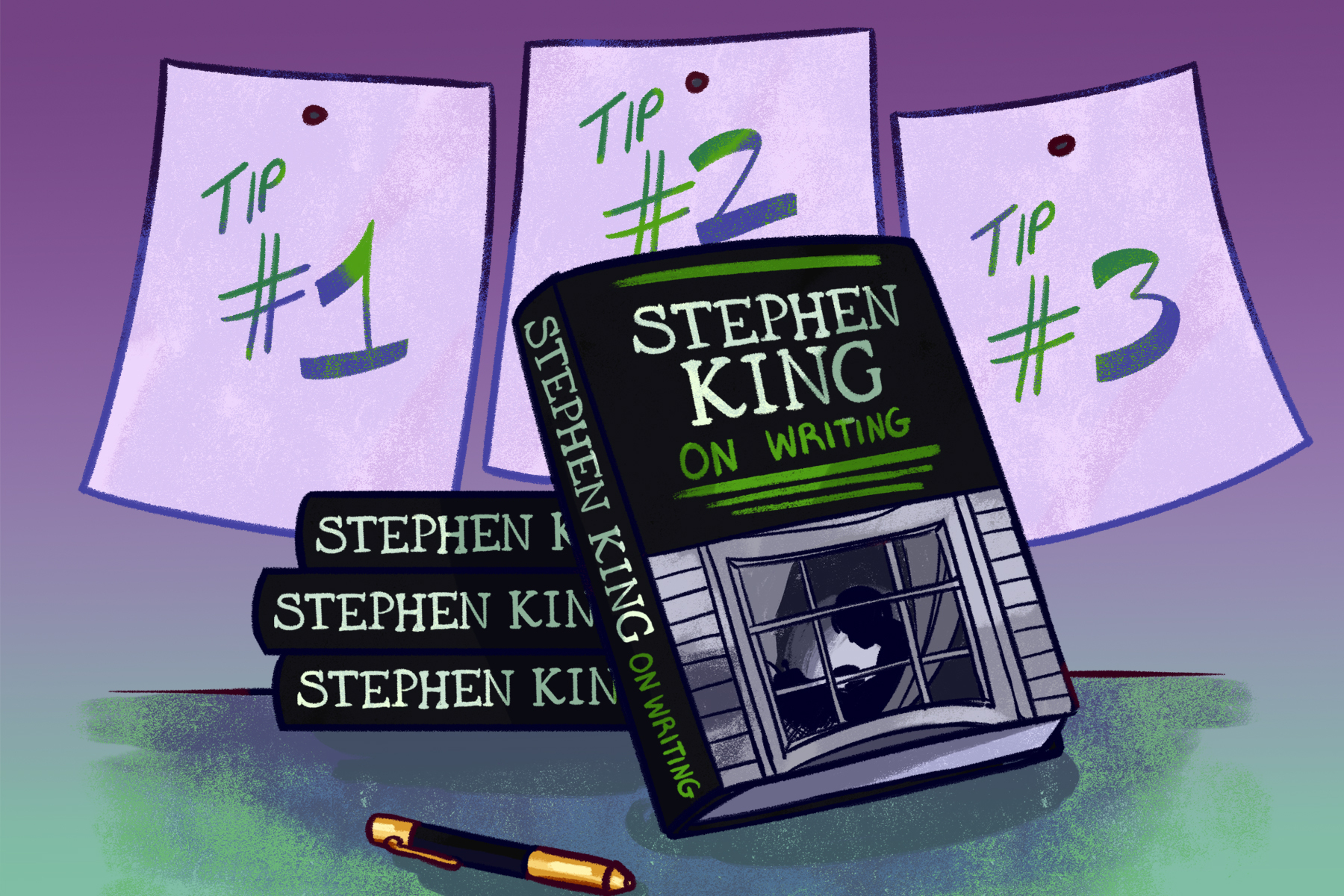There is no one right way to write, but to write well requires some semblance of a structure. The process of writing, the tools at a writer’s disposal and combating the dreaded scheduling pitfalls are all at the discretion of the aforementioned writer. Before taking on the monumental task — in the eyes of any aspiring author — of typing the first sentence of a story, there lies the inescapable (at least for now) dilemma of how one could even begin to write.
The physical necessities for writing are all there: a computer or for the old-fashioned, a pencil and paper, a quiet room calibrated to any atmospheric preferences and zero interruptions. But without a set-in-stone process or pre-established idea of a story’s premise, there’s little point in writing at all, at least, according to Stephen King’s 2000 memoir and how-to-guide, “On Writing.”
1. To Be a Writer Is To Be a Reader
Reading for pleasure and studying the writing style of an author are the two foundational pieces to becoming a competent writer. King remarks in the “On Writing” section of his memoir: “If you want to be a writer, you must do two things above all others: read a lot and write a lot” on top of the hard truth, “If you don’t have the time to read, you don’t have the time to (or the tools) to write.” King also provides an outline of how often a writer should read and write: a generous four to six hours a day, preferably in the morning when interruptions are minimal and any new ideas are still fresh on the mind.
According to “On Writing,” the act of reading and writing must be a pleasurable one for a writer, although enjoying the two are a given (hopefully) for self-proclaimed writers and established novelists. The commitment that comes with writing is rooted in the joy found in writing itself and there is no chance for inspiration if reading is done out of necessity and not from a place of enjoyment. Without the two, even starting a novel is nothing more than a pipe dream for those who wish to call themselves “authors” one day.
2. The Writing Toolbox
At the start of the chapter “Toolbox,” King recounts an experience with his uncle Oren and a toolbox passed down from “Fazza,” his grandfather. In classic King style, “On Writing” provides heavy exposition on the background of the toolbox, neglecting not a single detail, from the “The Undertow” painting engraved on the bottom of the box to the unmanageable 80-to-100-pound weight it carried to a young King. However, the significance of the toolbox isn’t the design, but rather, is found in the abundance of tools within and the three layers that house each tool and drill bit.
Top Layer: Common Tools
The two common tools outlined by King in “On Writing” are vocabulary and grammar. The vocabulary of a novelist is bound by the frequency at which the writer reads, what authors the writer reads the most and general preference. Internalizing the vocabulary of another author, however, is not the same as being inspired by their works, but instead treads on the border of imitation in the worst way. One other vocabulary sin is using words that turn away from the style of whatever it is a person is writing. Substituting “large” words for smaller ones for the sake of sounding fancy prevents one from building their own writing style. If all else fails, write the first word that comes to mind and worry about it later during the editing process.
Grammar is the next major tool, although a skill that to King, is either already present in a person or isn’t. For those lucky enough to grasp the principles of grammar, further improvement is only a matter of, again, writing over and over until a semblance of understanding (as much as a sane person can understand the complexity of grammar) is reached.
Middle Layer: Form and Style
Maintaining a personal writing style and following the form set for the piece at hand is paramount in creating a readable work. Incorporating style is what makes a book enjoyable, and is what adds that extra element of personality that is often neglected in formal or academic writing by no fault of the researcher, but because of the strict rules dictated by thesis panels and journal publishers.
Form is the backbone of any written piece, the wooden beams and nails holding together the structure outlined in King’s construction metaphor: “You will build a paragraph at a time, constructing these of your vocabulary and your knowledge of grammar and basic style.” The structure of a novel is built on the style in which a writer chooses to format their paragraphs albeit with little variation as books follow a semi-solid paragraph form: justified orientation with spacing before the start of a quoted dialogue.
Style, like the ability to write well, is built from reading books from different authors and across genres on a regular basis, and by regular, King means every day at every possible opportunity, even at the risk of committing a social faux pas. Style also requires the original voice of a writer removed from previous influences. To form a style, one should not emulate the work of another writer, but rather, be inspired by the works of other writers and take a piece of that work into oneself with an attitude of reverence or respect.
Bottom Layer: The Writing Process
The last layer is the simplest: According to Oren, it is important to keep your toolbox on hand, whether the entire box is necessary or not, because, “It’s best to have your tools with you. If you don’t, you’re apt to find something you didn’t expect and get discouraged.” Writing is a road paved with discouragement, but the previous layers can help fill the void that is the start of the writing process — the bottom layer of the toolbox. The writing process weeds out the non-serious authors from the serious writers who are willing to commit to writing on a daily basis, to read those 70 books a year or more and finish the under-construction house that a novel is and turning it into a home.
3. “Write with the door closed, rewrite with the door open”
There is no point in writing a book if it is only for others to read and enjoy — that is the hallmark of a terrible story in the making. A baker wouldn’t bake a cake if they didn’t think it tasted good to them personally. If so, the baker is a bad cook at best, and deserves for their shop to close at worst. As King says in the section “On Writing,” the first draft of a book should be for the writer, to tell themselves the story before the rewrite, when it then “belongs to anyone who wants to read it.” At any point after, the writer removes all unnecessary details, paragraphs that are not relevant to the story and shapes the story to the taste of their chosen audience.

















